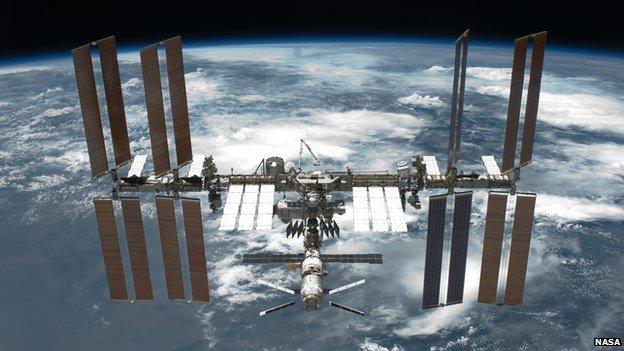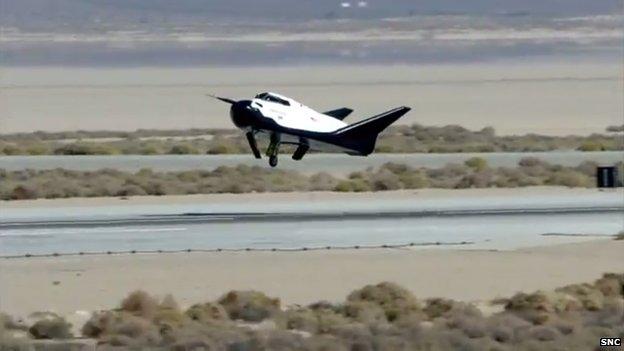International Space Station life 'to be extended'
- Published

Construction of the ISS began in 1998. Further modules are expected to be attached in future
Nasa has won White House backing to extend the life of the International Space Station for a further four years, until 2024.
Construction of the ISS began in 1998 and is a joint venture between the US, Russia, Canada, Japan, and states in the European Space Agency (Esa).
For the extension to happen, it will likely need the partners' support.
Their current commitments run to 2020, but many engineers believe the station could work safely until at least 2028.
Bill Gerstenmaier, the associate administrator at Nasa with responsibility for the station, told reporters that it was feasible to continue operating the ISS if some partners decided not to stay on board, but added that he expected them all to come through, even if the agreements took a few years to put in place: "I think the idea is that 10 years from today is a pretty far-reaching, pretty strategic decision," he said.
"We have talked to the partners about this... They were involved in all the hardware studies. In general, they see this as a positive step moving forward."
Certainly, Germany, Europe's biggest contributor to the ISS project is keen to see the $100bn orbiting platform operate for many years into the future.
Jan Woerner, the chairman of the German space agency (DLR), said: "Germany is eager to use the ISS until 2020 and beyond. Full stop. This is the German position and we hope the other [European] member states will make the commitment and give the money for that."
Prof Woerner was speaking in Washington DC where his national agency and Esa announced technical tie-ups with the Sierra Nevada Corporation (SNC), which is developing a mini-space shuttle to carry astronauts to and from the ISS.
At the moment, the station is solely reliant on Russian Soyuz capsules to rotate the platform's six-person crew. Nasa is therefore seeding American companies, including Sierra Nevada, to help them design and build alternatives.
The mini-shuttle is known as the Dream Chaser and would launch atop an Atlas rocket from Cape Canaveral in Florida.
It is envisaged that the vehicle will make its maiden voyage into orbit in 2016, in an autonomous configuration; and then fly its first manned mission in 2017.
With no crew transport capability of their own, DLR and Esa are keen to explore areas where they could cooperate with SNC on its Dream Chaser programme.
"The first one is the docking mechanism - the mechanism that would connect the Dream Chaser to the space station," said Esa's Elena Grifoni Winters. "And the other area we are looking at is crew displays and crew aids."
In addition, Germany has heatshield technology that it believes could protect the vehicle on re-entry equally as well as SNC's chosen material but which would also offer significant weight savings. These savings might then allow the Dream Chaser to carry heavier payloads into space, said Prof Woerner.
He then put forward the idea that Europe itself could launch the mini-shuttle on its next version of the Ariane 5 rocket, which flies out of Kourou in French Guiana.
"It's even possible with some minor changes to the Dream Chaser to launch it within the fairing (the clam-shell covering at the top of the rocket), but the Dream Chaser would need to be changed a little bit because the wings are a bit too big. Or one puts it on top of the Ariane 5 as it will be on the Atlas, but then we have to re-calculate all the aerodynamics," he told BBC News.
The Ariane 5 was originally conceived as a human launcher, and Europe spent considerable funds designing its own mini-shuttle called Hermes to go on top of the rocket. Budget constraints eventually led to the Hermes project being cancelled.

A full-sized model of the Dream Chaser has begun flight tests
Jonathan.Amos-INTERNET@bbc.co.uk and follow me on Twitter: @BBCAmos, external
- Published20 November 2013
- Published29 September 2013
- Published20 May 2013
- Published17 March 2011